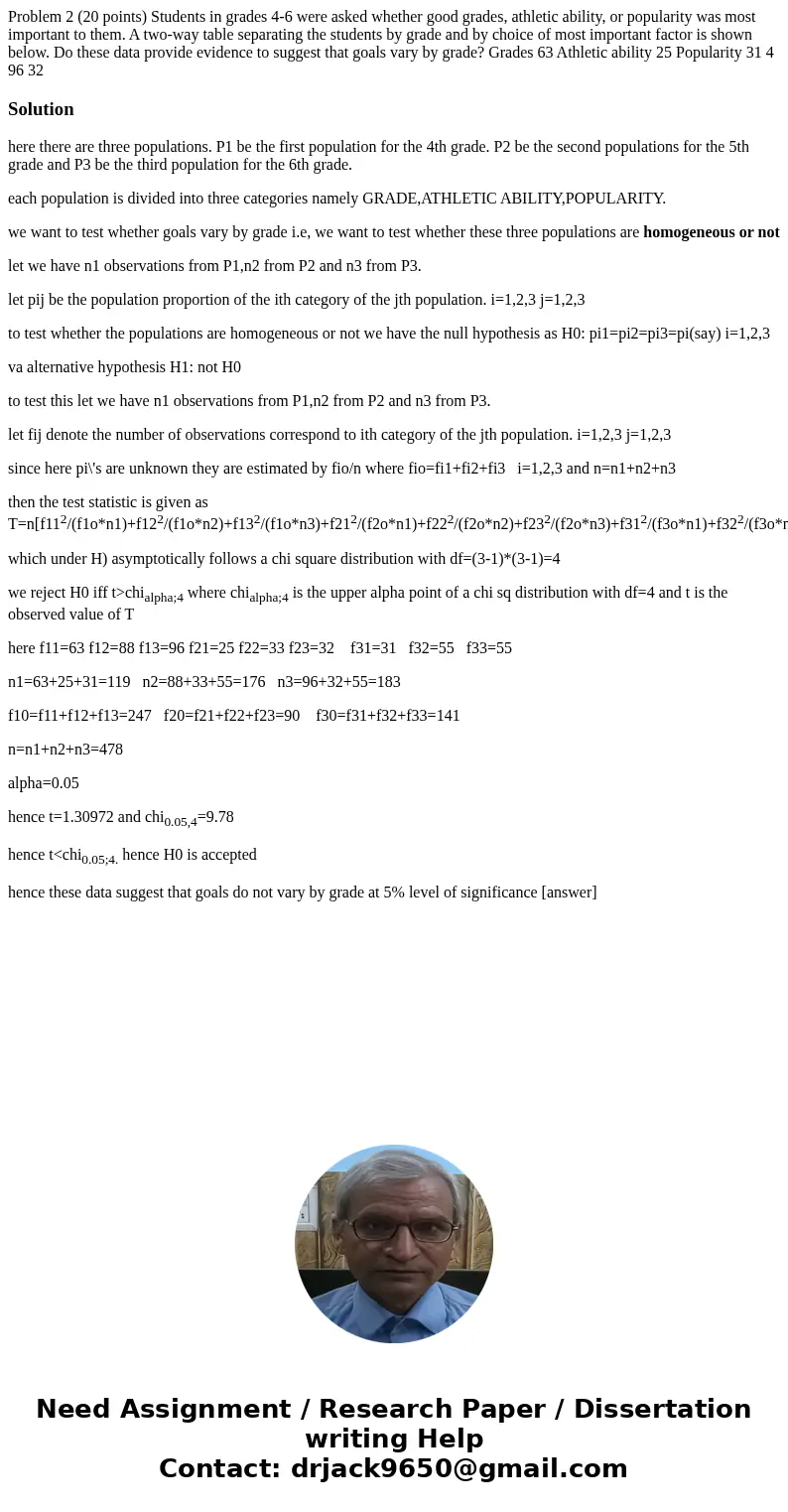Problem 2 20 points Students in grades 46 were asked whether
Solution
here there are three populations. P1 be the first population for the 4th grade. P2 be the second populations for the 5th grade and P3 be the third population for the 6th grade.
each population is divided into three categories namely GRADE,ATHLETIC ABILITY,POPULARITY.
we want to test whether goals vary by grade i.e, we want to test whether these three populations are homogeneous or not
let we have n1 observations from P1,n2 from P2 and n3 from P3.
let pij be the population proportion of the ith category of the jth population. i=1,2,3 j=1,2,3
to test whether the populations are homogeneous or not we have the null hypothesis as H0: pi1=pi2=pi3=pi(say) i=1,2,3
va alternative hypothesis H1: not H0
to test this let we have n1 observations from P1,n2 from P2 and n3 from P3.
let fij denote the number of observations correspond to ith category of the jth population. i=1,2,3 j=1,2,3
since here pi\'s are unknown they are estimated by fio/n where fio=fi1+fi2+fi3 i=1,2,3 and n=n1+n2+n3
then the test statistic is given as T=n[f112/(f1o*n1)+f122/(f1o*n2)+f132/(f1o*n3)+f212/(f2o*n1)+f222/(f2o*n2)+f232/(f2o*n3)+f312/(f3o*n1)+f322/(f3o*n2)+f332/(f3o*n3)-1]
which under H) asymptotically follows a chi square distribution with df=(3-1)*(3-1)=4
we reject H0 iff t>chialpha;4 where chialpha;4 is the upper alpha point of a chi sq distribution with df=4 and t is the observed value of T
here f11=63 f12=88 f13=96 f21=25 f22=33 f23=32 f31=31 f32=55 f33=55
n1=63+25+31=119 n2=88+33+55=176 n3=96+32+55=183
f10=f11+f12+f13=247 f20=f21+f22+f23=90 f30=f31+f32+f33=141
n=n1+n2+n3=478
alpha=0.05
hence t=1.30972 and chi0.05,4=9.78
hence t<chi0.05;4. hence H0 is accepted
hence these data suggest that goals do not vary by grade at 5% level of significance [answer]

 Homework Sourse
Homework Sourse